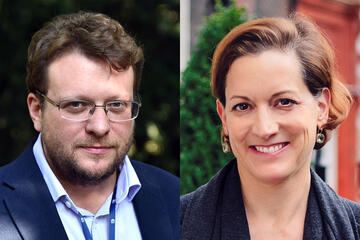Anton "Tony" Dahbura, is executive director of the Johns Hopkins Information Security Institute, co-director of the Johns Hopkins Institute for Assured Autonomy, and associate research scientist in computer science in the Whiting School of Engineering.
With the U.S. general election less than a week away, social media platforms and online spaces are saturated with a deluge of campaign ads and messaging. A concerning mix of disinformation and misinformation is woven into this content, making it a challenge for people to know what to believe and what to question. Here, Johns Hopkins cybersecurity expert Anton Dahbura offers guidance to help consumers navigate this landscape.

Image caption: Anton Dahbura
How can the average person identify election-related disinformation? What should we look for?
Although disinformation is increasingly difficult to spot, especially with the use of AI tools by bad actors, here are some ways that people can increase their chances of detecting disinformation:
- Consider the source. Social media sites are the least reliable sources, while reputable news platforms are usually the most reliable when it comes to debunking disinformation.
- Be sure to cross-check information that you aren't sure of with trusted sources including Snopes or PolitiFact.
- Be aware of emotionally charged or sensational language that incites strong emotions and check the information.
- Be skeptical of photos and videos that may have been manipulated or created with the help of AI tools.
- Be wary of distorted statistics or fake polls.
Who creates disinformation, and why?
Disinformation has been around as long as humans have been able to communicate with one another, and, unfortunately, the internet only amplifies and accelerates the process. The sources range from nation-states or their proxies that wish to influence foreign elections to further their own goals, to internal political organizations, ideological groups, hacktivists, and trolls. In addition, individuals share false information unknowingly, believing it to be true. The common thread is to further an individual's or group's self-interests, sowing distrust, and polarizing communities in the process.
What steps can we take to verify the accuracy of election-related information we encounter online?
The quickest and most effective way to verify the accuracy of election-related information is to get used to questioning the veracity of what you read and cross-reference with trusted sources. After all, the same internet that delivers disinformation so efficiently can and should be used to fact-check that same disinformation! In most cases, it takes only a few seconds of searching on trusted sites to determine if the information is accurate.
Posted in Politics+Society
Tagged misinformation, 3-questions, election 2024










